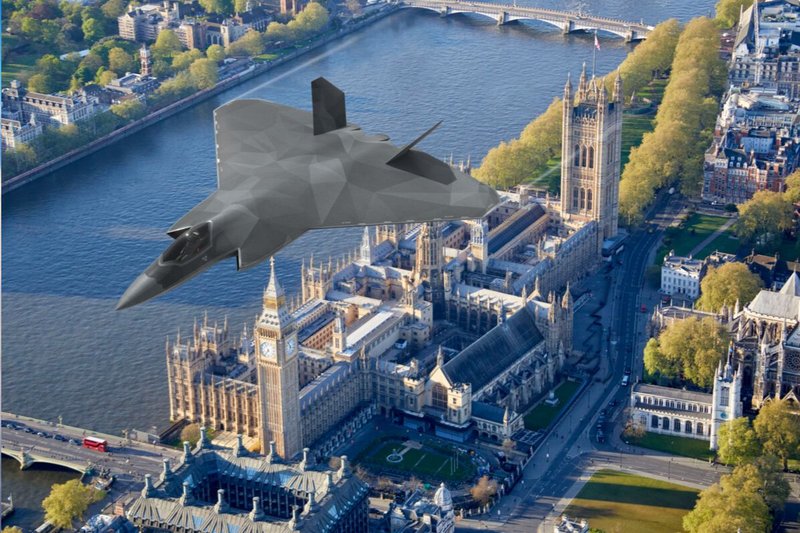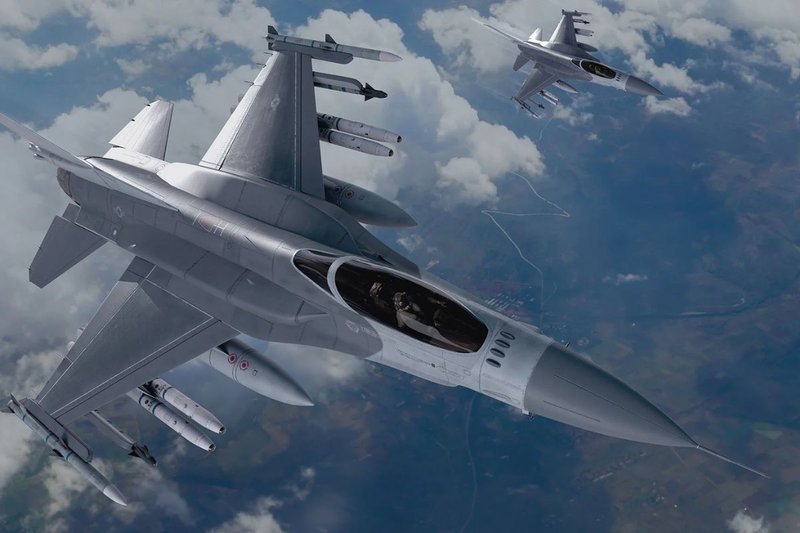Air Warfare Preview 2025: A pressure-filled year ahead will see decisions made on major platforms and programmes
A concept for the NGAD sixth-gen fighter. (Image: Lockheed Martin)
The next 12 months look set to be prove crucial for the ongoing delivery and purchase of air platforms as various armed forces’ modernisation efforts continue.
It will also be a decisive year that will see some highly anticipated announcements regarding future air programmes including the Global Combat Air Programme (GCAP)/Future Combat Air System (FCAS), the US’s Next-Generation Air Dominance (NGAD) and the UK’s New Medium Helicopter.
Manufacturers will await the outcome of the UK’s Strategic Defence Review which is anticipated for the first half of 2025. The externally-led review will determine how and on what defence platforms, programmes and resources the UK will spend its money – and, vitally, what it will choose to cut.
Related Articles
German Armed Forces receive first of 82 H145M helicopters
US Air Force pushes NGAD decision to Trump administration
GCAP industry partners ink agreement to form joint organisation
In the US, the incoming Trump administration will shape the US Air Force (USAF) and its related programmes trajectory over the next four years. The US House of Representatives recently passed the US$895 billion 2025 defence spending bill, which included ongoing budget request for F-15EX aircraft, F-35s, C-130J aircraft, and funds for UH-60 Black Hawk and CH-47 Chinook helicopters.
Whether or not Trump will make good on his previous comments that the US would not protect NATO countries against Russia who did not “pay” their 2% GDP on defence remains to be seen. In response, however, NATO members have reportedly pre-emptively discussed a 3% defence spending target, according to The Financial Times.
Vital decisions will be made on sixth-gen programmes
Both for GCAP and NGAD, 2025 will be a year that should usher in further clarification for the sixth-generation combat air programmes. While both projects are in the early stages of their development, decisions on funding for the programmes are anticipated next year.
The concept and assessment phase for GCAP is expected to complete in 2025, with the UK, Japan and Italy all reaffirming their commitment to the programme. An industry-led joint venture agreement was signed in December 2024. It stipulated that a new company would be formed to lead the design and development of the fighter, which is expected to become official in mid-2025 along with the already announced government-led partnership.
The USAF has stated that the decisions around NGAD would be deferred to the Trump administration. The programme has been on hold since mid-2024, after Air Force Secretary Frank Kendall said it would undergo a review when concerns over the unit cost per airframe were raised.
It has also said the programme’s demise is “grossly exaggerated” . The USAF originally planned to award the NGAD contract at the end of 2024, it will now be 2025 as the USAF continues with its analysis of the programme.

What about combat aircraft?
For combat aircraft, 2025 is perhaps the year manufacturers make some headway on previously delayed aircraft orders.
The UK Royal Air Force expects to receive the rest of its first tranche of 47 F-35Bs from Lockheed Martin by the end of 2025, according to UK minister for defence procurement, Maria Eagle. The aircraft are a replacement for its retired Harrier fleet, and so far 37 aircraft have been delivered.
Lockheed should also move closer to finalising its Lot 18 and 19 contract for its F-35 aircraft, building on its ‘handshake deal’ at the end of 2024.
Over in the US, however, it is predicted that Congress will cut the number of F-35s the US Armed Forces could buy. The proposed National Defense Authorisation Act for 2025 would limit this number to 48. The original budget proposal was reportedly asked for 42 F-35As, 13 F-35Bs and 13 F-35Cs.
The country will also begin its ageing aircraft withdrawal plans, with the USAF starting its transition away from A-10 aircraft in favour of updating its F-16 and introducing the F-15EX and F-35 jets into South Korea.
2025 also promises to be a key year for Saab’s Gripen E aircraft, as delivery timelines for the SEK 5.8 billion (US$526 million) were originally sped up in 2023. The Swedish Air Force’s 60-strong aircraft order is anticipated to begin deliveries to its F7 Wing, ahead of its deployment in 2025.
It will also be a significant year for electronic warfare suite development as LHarris’ Viper Shield for the F-16 aircraft is also expected to be completed towards the end of 2025. So far, six countries are procuring a total of 188 systems – provided as part of the F-16 upgrade to Block70/72, or as a new build. Countries that have requested the upgrade to their F-16 fleet include Poland, with an approved $7.3 billion upgrade signed in October 2024.

Rotary platforms given lift
The contract award for the UK’s New Medium Helicopter programme is expected by 2025, with Leonardo left as the sole bidder. However, despite assurances from the UK Ministry of Defence that the programme to replace the Puma still being considered, concerns have been raised by Union members over the government’s commitment.
For Sikorsky’s UH-60M Black Hawk, Brazil is set to receive the first of its Black Hawk helicopters next year for its army, in a Foreign Military Sale worth up to $950 million. The remainder are set to be delivered between 2027 and 2029.
Remote pilot training on the platform also continues apace, with Sikorsky to roll out demonstration flights to showcase the MATRIX flight autonomy system in 2025 to the US Marine Corp.
The German Armed Forces expect the refresh of its fleet, with NH90 Sea Tiger deliveries set to take place in 2025 for its Navy operations, replacing its 21 ageing Westland Mk 88A Sea Lynx. According to Shephard Defence Insight, full-rate production of six helicopters per year is expected at a price-tag of approximately $63 million per helicopter.
Airbus will also make deliveries to the German Armed Forces, which expects to receive some further H145Ms, following the first delivery of its 82-strong order in 2024. Deliveries of the H145 will also begin for the UK, who made an order for six more of the type in April 2024. Both will be used as interim replacements – the first for Germany’s Tiger attack helicopters, the second for the UK’s Puma HC2s – pending governmental decisions on what should replace them.

UAS programmes
According to Defence Insight data, spending on UAVs in 2025 is estimated to be $8.2 billion in 2025. The US has the highest annual spending, investing $1.9 billion, 23.8% of 2025 global spending, on UAVs. The country is also estimated to possess the programme that will receive the most funding in 2025, with the nation expected to spend $350 million on its Replicator 1 effort to field thousands of attritable, autonomous systems across multiple domains before the end of 2025.
India is estimated to be the third-highest-spending country in 2025, spending $534 million, 6.5% of the annual global spend. A total of 45% of this 2025 expenditure is estimated to come from its tri-service acquisition of 31 MQ-9B aircraft from General Atomics which the Indian MoD announced in October 2024.
2025 appears to hold further good news for General Atomics. Regarding the US drone manufacturer, the UAE and the Netherlands are estimated to be the fourth and fifth largest spending countries in 2025, spending $418 million and $401 million, respectively. Both countries could have a substantial outlay in 2025 on the MQ-9 family.
The inbound Trump administration could inject life into the UAE’s procurement of 18 weapons-ready M-9B SkyGuardian UAVs, frozen during the Biden administration. More certain is the $301 million outlay the Netherlands is estimated to invest in procuring the second batch of four Block 5 MQ-9A Reapers, which was approved by the US State Department in 2023.
Related Programmes in Defence Insight
New Medium Helicopter (NMH) [UK]
Global Combat Air Programme [UK]
Collaborative Combat Aircraft (CCA) (Increment 1) [USAF]
Related Equipment in Defence Insight
More from Air Warfare
-
![Baykar completes Piaggio Aerospace takeover with plans to boost drone production]()
Baykar completes Piaggio Aerospace takeover with plans to boost drone production
The takeover of the Italian firm by Baykar solidifies the company’s efforts to forge closer ties with Italian industry, bolsters its partnership with Leonardo to produce UAVs and secures its foothold in Europe.
-
![US budget boosts Boeing’s F-15EX with $3.1 billion investment to increase fleet to 129]()
US budget boosts Boeing’s F-15EX with $3.1 billion investment to increase fleet to 129
The F-15EX Eagle II had already been singled out for further funding in January 2025, when it was chosen to replace the A-10 aircraft for the US National Guard.
-
![Spain earmarks $1.6 billion for Hurjet trainer aircraft acquisition]()
Spain earmarks $1.6 billion for Hurjet trainer aircraft acquisition
Spain’s Defence Minister told the Senate Defense Commission on 27 June of the decision to acquire Turkish Aerospace Industries’ (TAI) trainers as the country seeks to replace its Northrop F-5M aircraft.
-
Leonardo’s Proteus structural tests “nearing completion” ahead of first flight
The company has tested over 15 mission sets for the drone, with the rotorcraft used to demonstrate the viability of armed forces utilising large uncrewed aerial systems’ (UAS) for autonomous missions in the future.

























